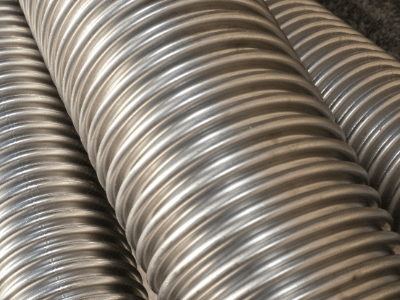What Is a Flexible Hose?

Flexible hoses are tubular products that play an important role in a wide variety of applications due to their superior flexibility and elasticity.
These hoses are manufactured based on advanced materials engineering and design to take advantage of their properties, providing superior durability and functionality under diverse conditions.
Uses of Flexible Hoses
1. Industrial Fields
Used in the chemical, food processing, oil and gas, and other industries to transport and supply liquids and gases. Since they are manufactured from special materials, they are less susceptible to corrosion and contamination and play an important role in maintaining product quality and safety.
2. Medical Field
Used as part of medical devices such as IV tubing, catheters, and suction devices. Because of their flexibility and biocompatibility requirements, they play an important role in ensuring patient safety.
3. Automotive Industry
Coolant and brake hoses are used to supply coolant and brake fluid. They must withstand high temperatures and high pressures and are essential for safety.
4. Food Industry
Used to transport and supply beverages and food products. The use of special materials plays an important role in protecting food quality and hygiene.
5. Agriculture
They are used for the application of pesticides and fertilizers, irrigation systems, etc. Its flexible characteristics allow it to adapt to different agricultural operations and improve work efficiency.
6. Household Products
It has many applications in everyday life, such as garden watering hoses, shower heads, and washing machine drainage hoses. Flexibility and durability support comfortable living.
7. Fuel Supply
Fuel hoses are used to supply fuel for automobiles and aircraft. High reliability and durability are required.
8. Industrial Applications
Used to transfer liquids and gases in factories and plants to support efficient production processes.
Principle of Flexible Hoses
1. Layer Structure Design
Flexible hoses typically consist of multiple layers. The inner layer ensures fluid flow, while the outer layer serves as a protective layer against external influences. This ensures that the fluid inside is not affected by the external environment and vice versa.
2. Design and Processing Technology
Flexible hose is manufactured using special processing techniques such as thermoforming and extrusion, where the shape and dimensions of the hoses are designed to suit the specific application. The design process aims to optimize flexibility, durability, and fluid flow.
3. Durability and Functionality
Flexible hoses must withstand external stresses such as bending, stretching, and pressure fluctuations. Therefore, it is important to select materials and optimize the layer structure during the design phase. Appropriate inner surface finishes and coatings may also be applied to match the properties of the fluid inside.
4. Wide Range of Applications
Flexible hose is applied in a wide variety of applications due to its flexibility and durability. They are used in a variety of situations related to the manipulation of liquids and gases, such as fluid transfer, feeding, draining, and suction.
Types of Flexible Hoses
1. Rubber Tubing
Flexible tubing made from rubber materials is durable and used to transfer a variety of liquids and gases. They may have oil and chemical resistance and are widely used in the automotive and chemical industries.
2. Plastic Tubing
Made from various types of plastics, flexible hoses are lightweight and easy to handle. Food-grade plastic tubing is also available for use in the food and medical industries.
3. Synthetic Fiber Tubing
Synthetic fiber flexible tubing is strong, durable, and capable of withstanding pressure and tension. They are suitable for use in high-pressure environments, gas supply, and other applications.
4. Silicone Tubing
Silicone materials have high heat resistance and durability and are sometimes used in medical equipment and the food industry. Silicone tubing is also chemically stable and can be used with a wide range of liquids and gases.
5. Sanitary Tubing
These hoses are designed to meet the sanitary requirements of food, pharmaceutical, cosmetic, and other industries. Used in clean room environments, they serve to maintain product quality and safety.
6. Elastic Tubing
Tubes with excellent elasticity are easily adaptable to bending and pulling and are suitable for tight spaces and complex shapes. They are used in medical equipment, vehicle parts, and industrial applications.
7. Chemical-Resistant Tubing
Tubing resistant to certain chemicals and solvents is used in the chemical industry and research institutes. This allows for the safe transfer and testing of chemicals.
Other Information on Flexible Hoses
Material Selection
The key characteristics of flexible hoses are the flexibility and elasticity of the material. Through advanced materials engineering, resilient polymers, rubbers, and synthetic fibers are used. These materials provide the proper flexibility for bending and stretching while maintaining strength.